How to play the D chord on guitar
The D chord fuels countless rock classics and pop ballads alike. We break it down, along with some useful variations
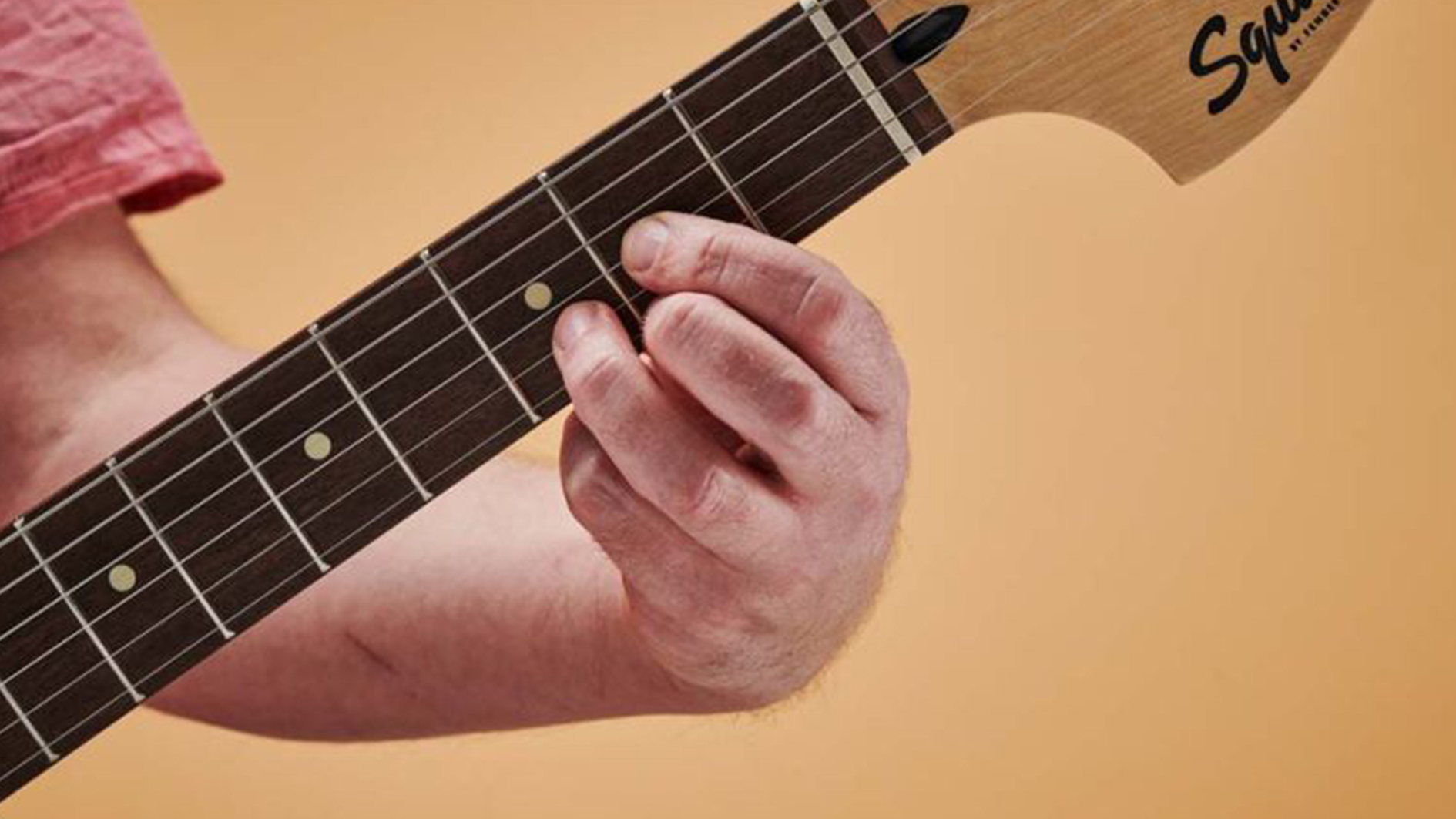
The key of D just sounds great for guitar. Feel-good rock classics like Bryan Adams' Summer of '69 and Lynyrd Skynyrd's Sweet Home Alabama take advantage of how bright and powerful this chord sounds, while ballads like Ed Sheeran’s Thinking Out Loud and U2’s With or Without You capitalize on how satisfying it is to strum.
If you’ve been following our series on guitar chords, learning how to play the D chord will complete your knowledge of the open major chords on guitar.
Together, the five chords spell out C-A-G-E-D, which makes them easy to remember. If you want to practice all five chords together, try strumming through Jimi Hendrix’s Hey Joe, which uses all 5 in the sequence C-G-D-A-E.
- How to play guitar chords for beginners
- How to play the C chord on guitar
- How to play the A chord on guitar
- How to play the G chord on guitar
- How to play the E chord on guitar
How to play the D chord on guitar: open D
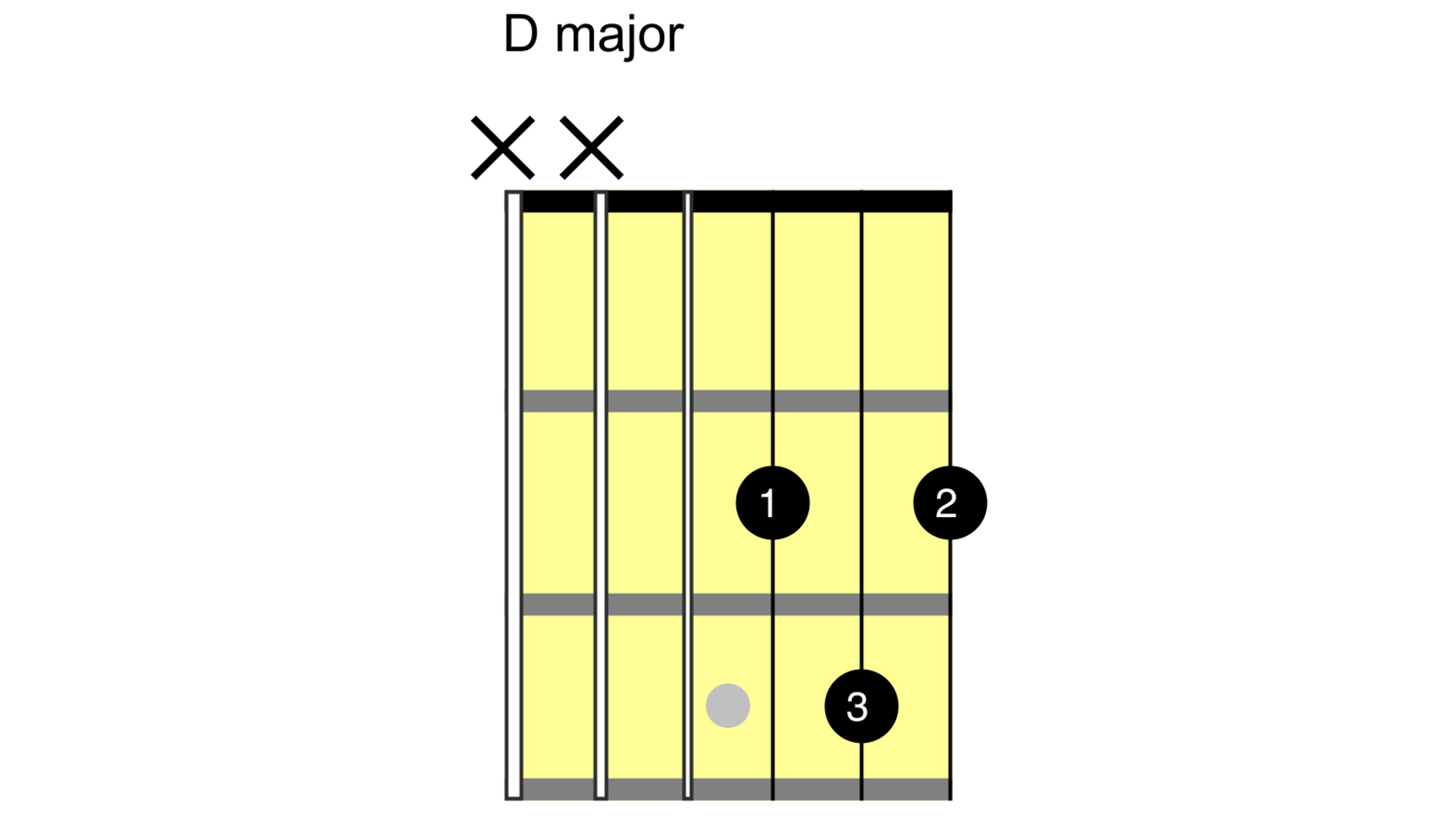
To play the D major chord, put your first finger on the G string, fret 2. Your second finger goes on the high E string, fret 2, and your third finger goes on the B string, fret 3. Your three fingers end up forming a triangle, and you might find it easier to remember this shape by visualizing that triangle.
It’s a relatively easy chord shape to fret, but challenging to strum because you want to avoid plucking the low E and A strings. There are versions of D that use all six strings, and we’ll look at those later on.
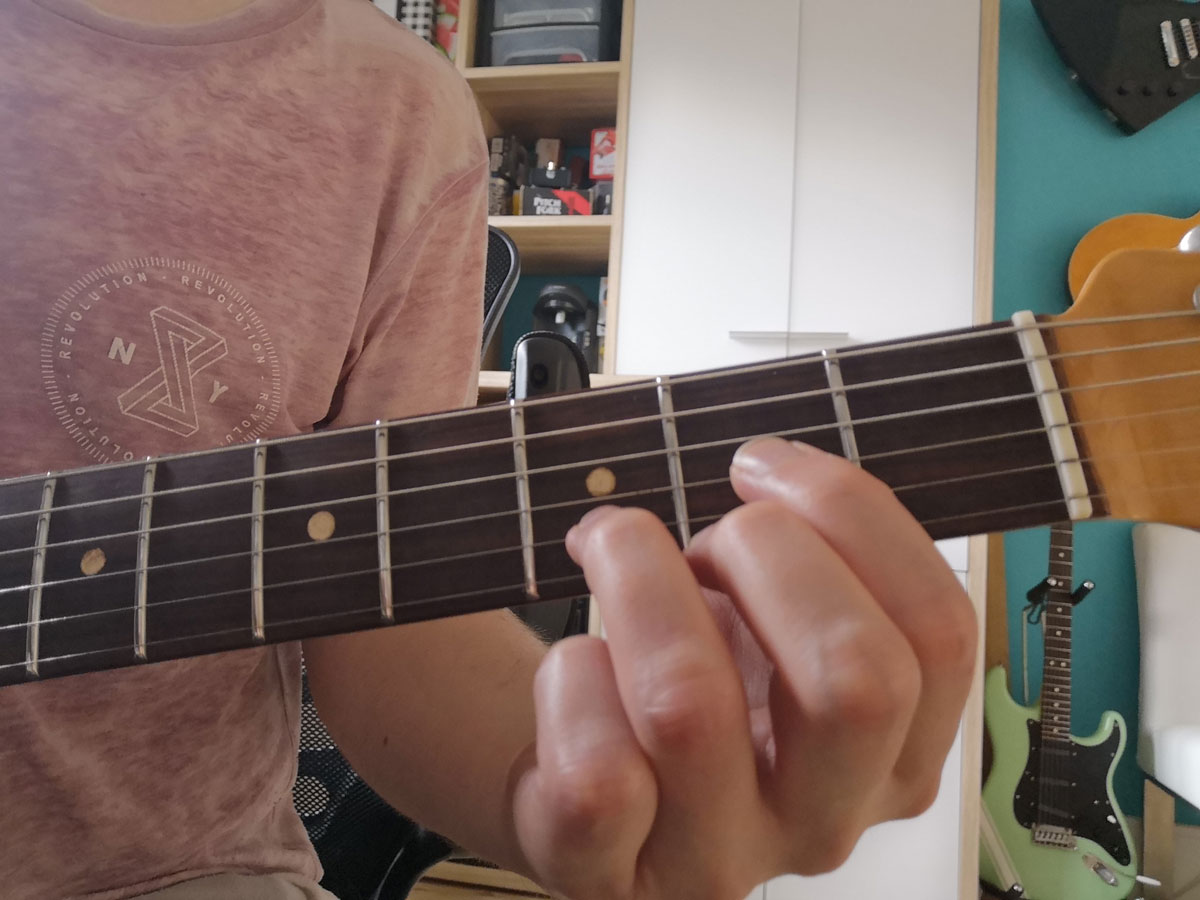
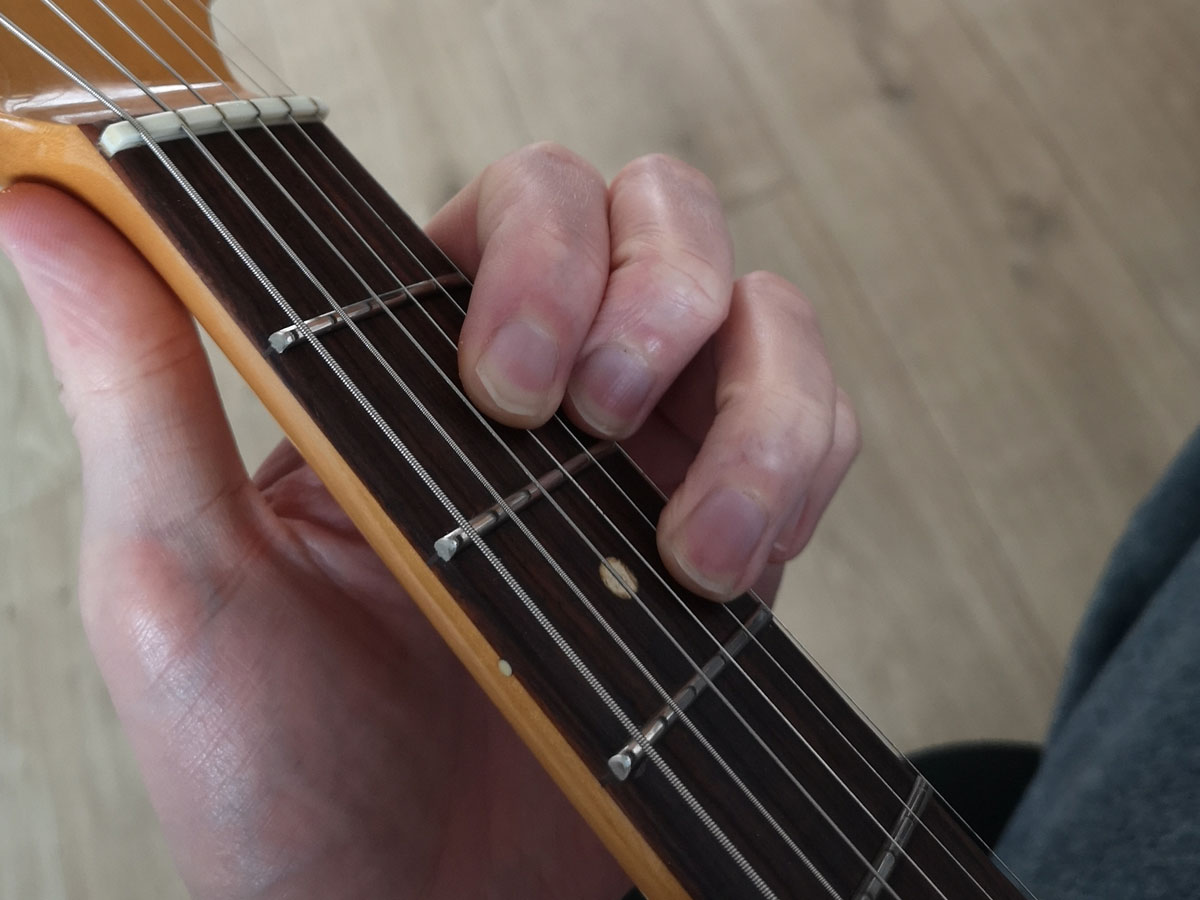
How to play the D chord on guitar: D major barre chords
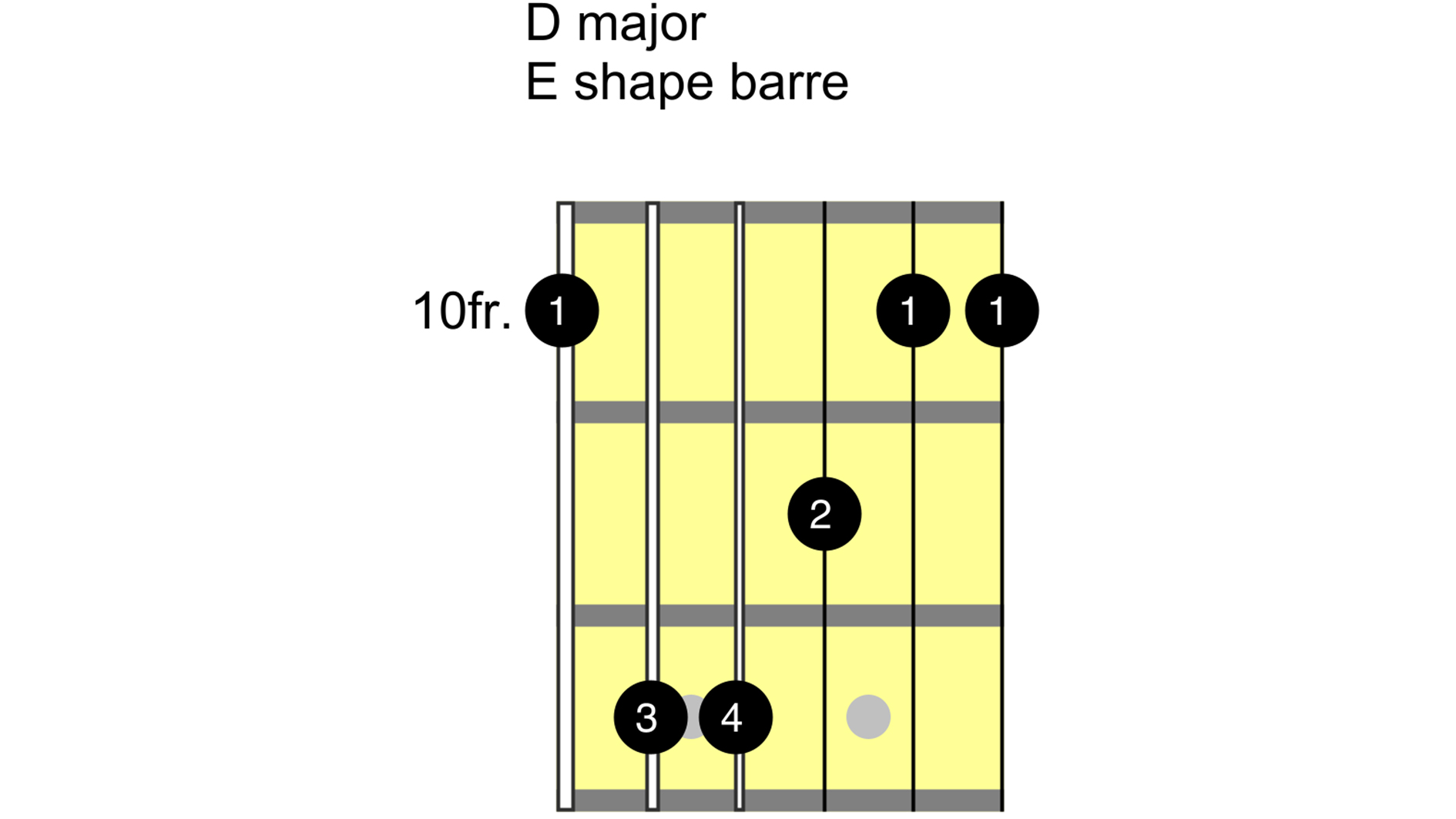
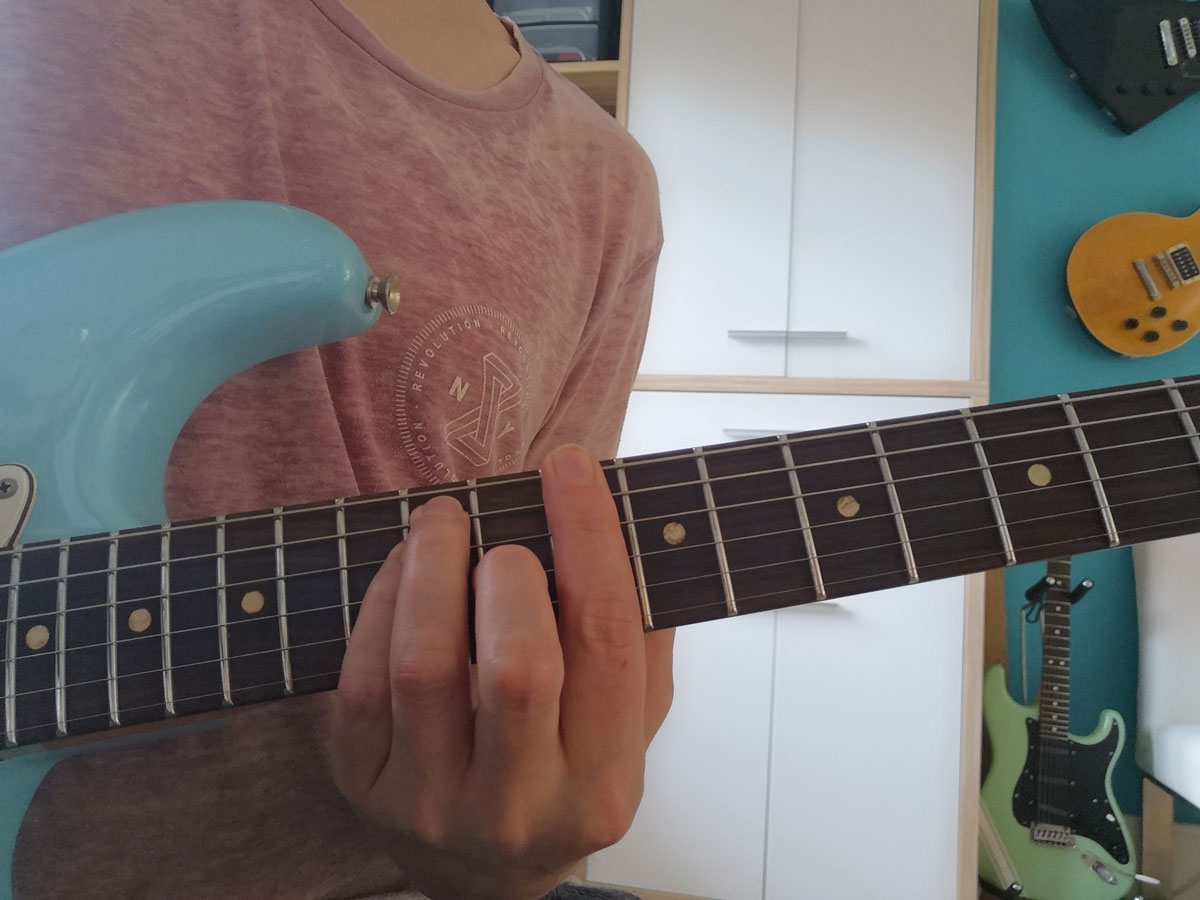
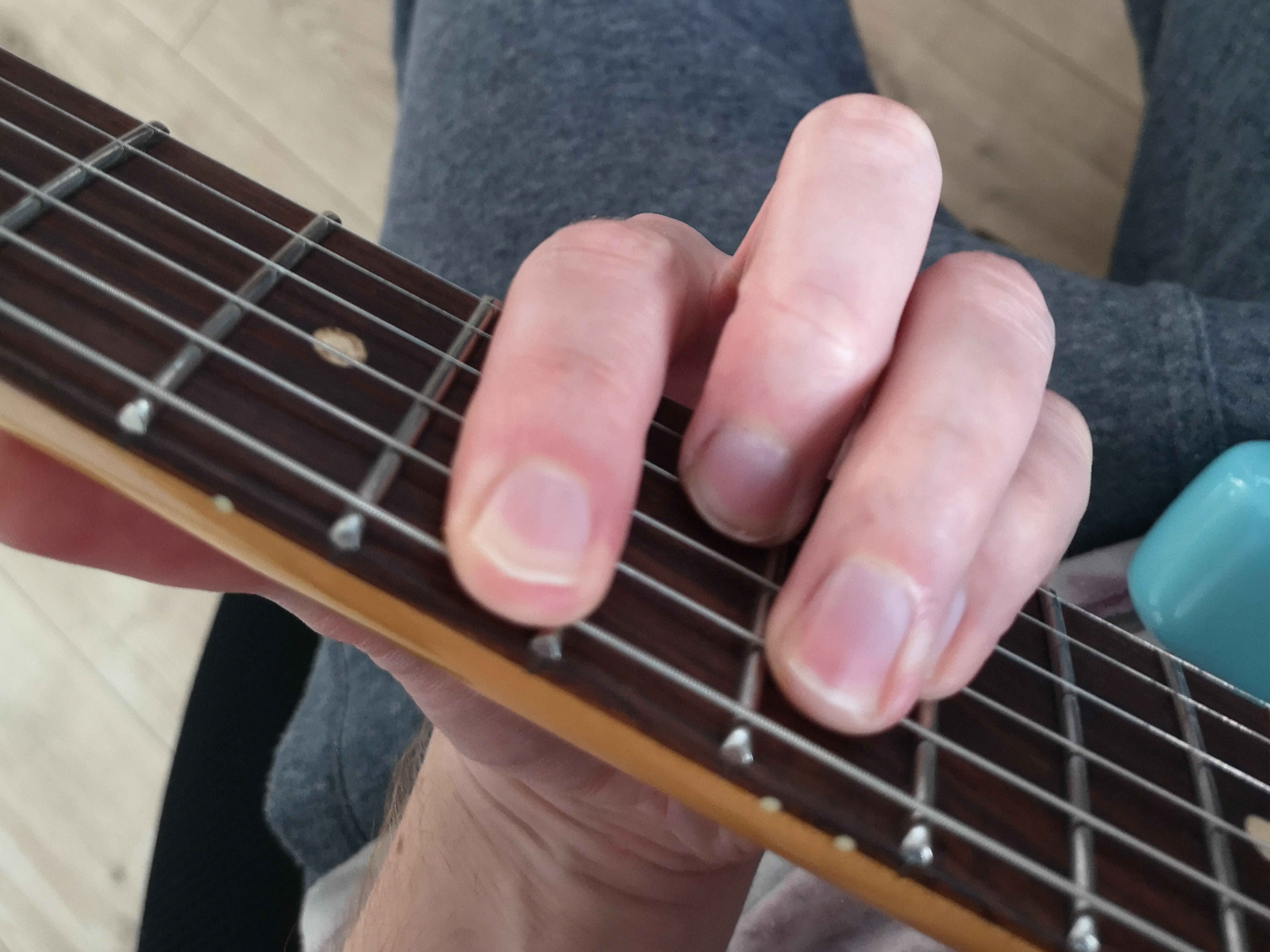
The E-shape barre chord of D major is played at the 10th fret. Barre the 10th fret with your first finger. Then add your second finger to the G string, 11th fret; third finger to the A string, 12th fret; and fourth finger to the D string, 12th fret. You can strum all six strings.
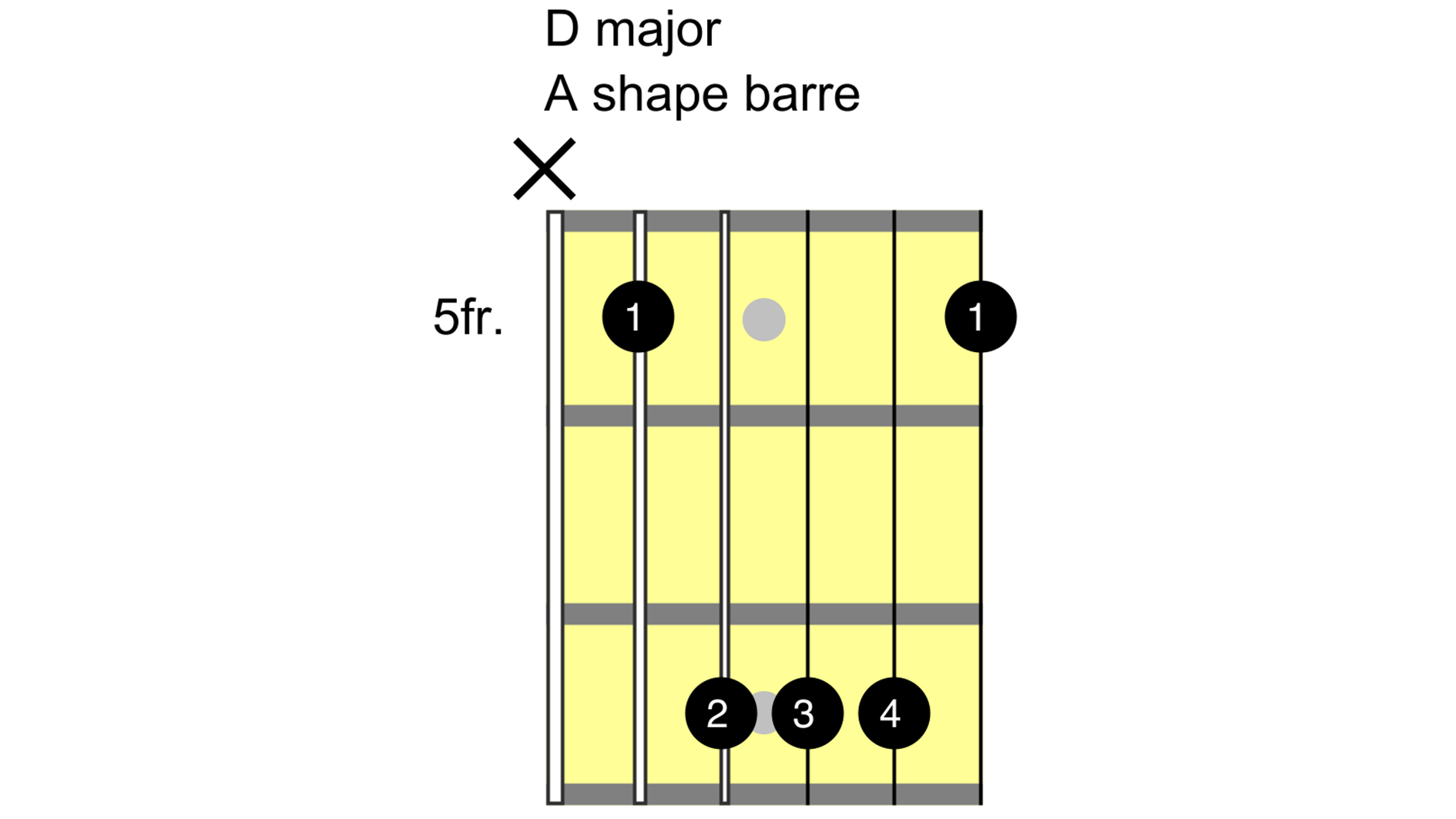
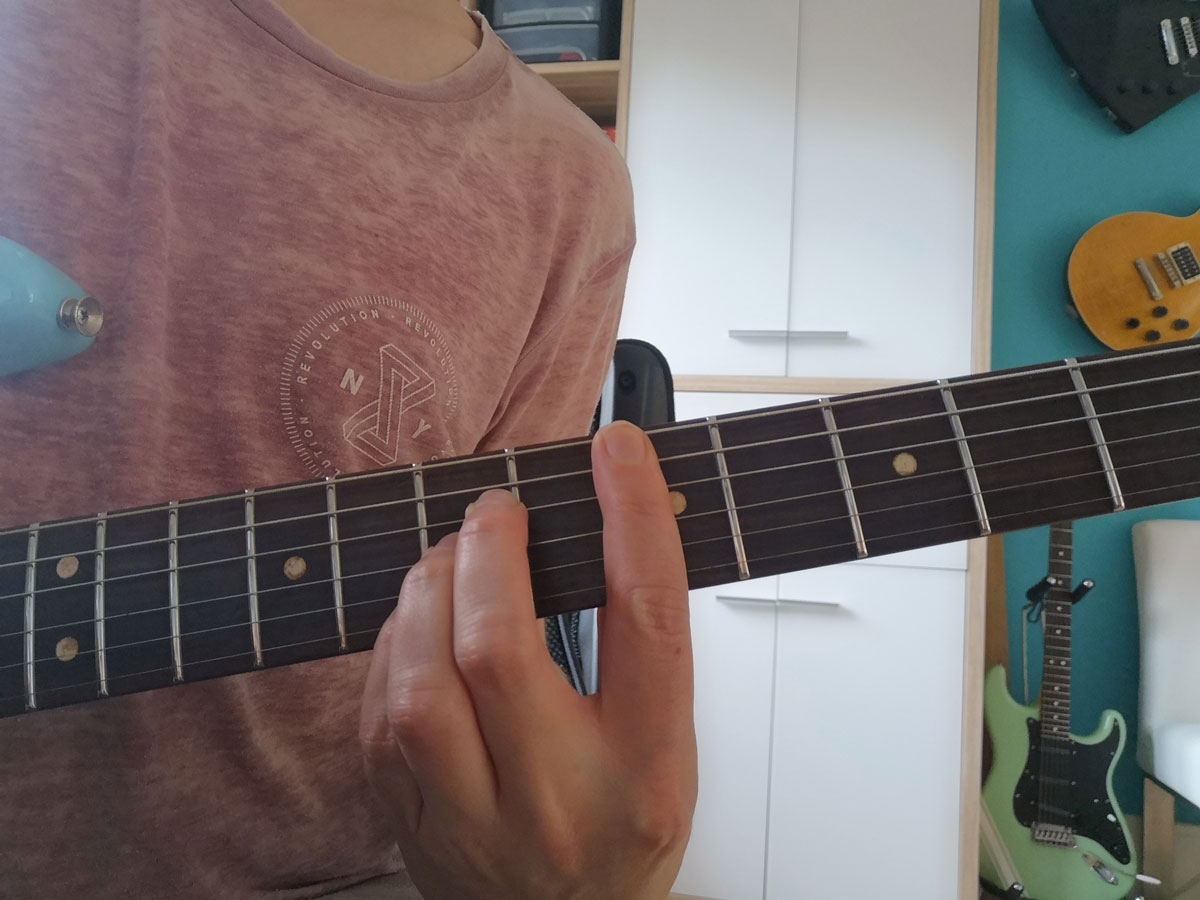
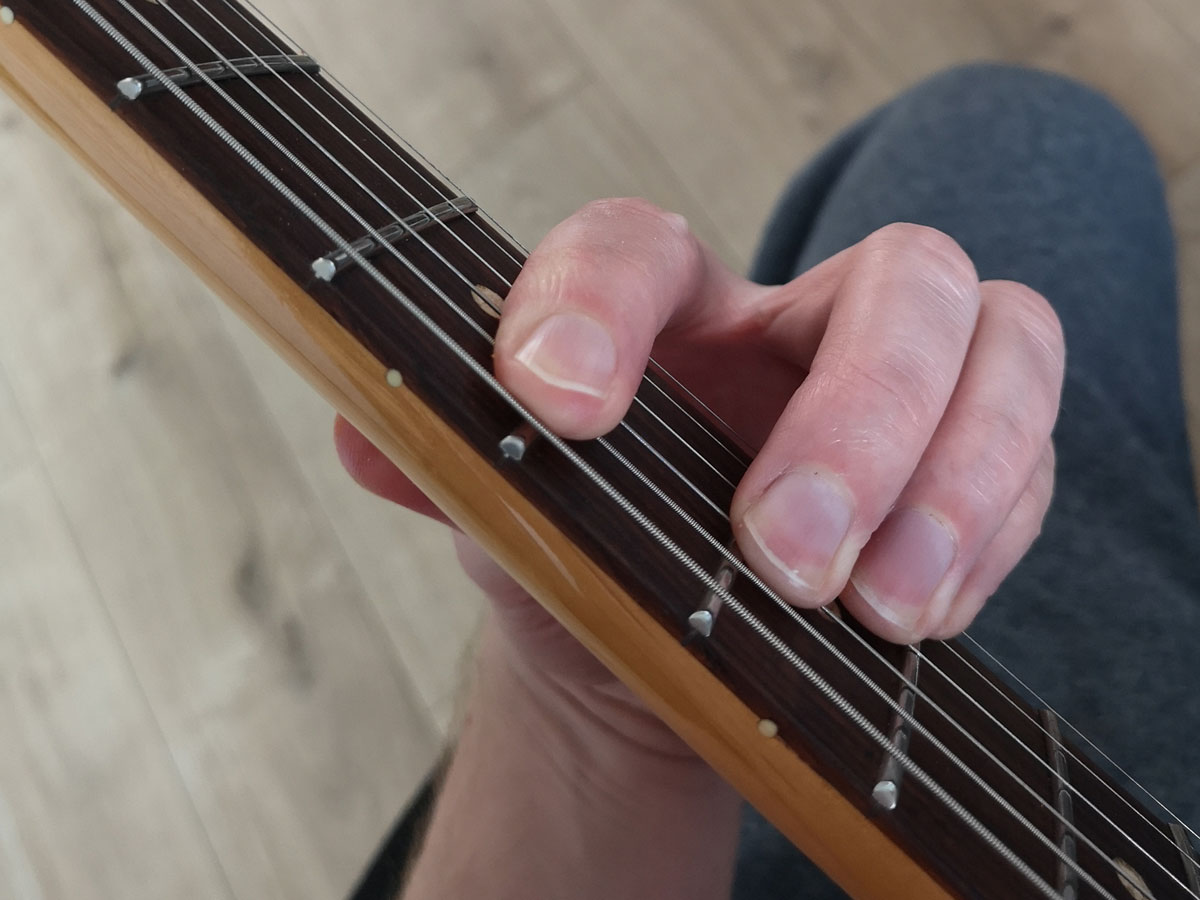
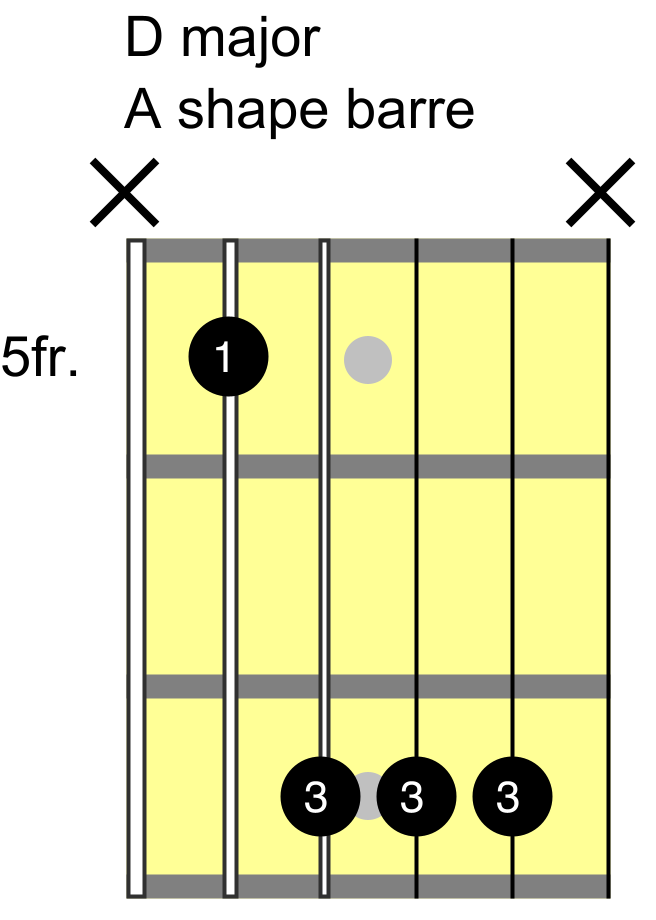
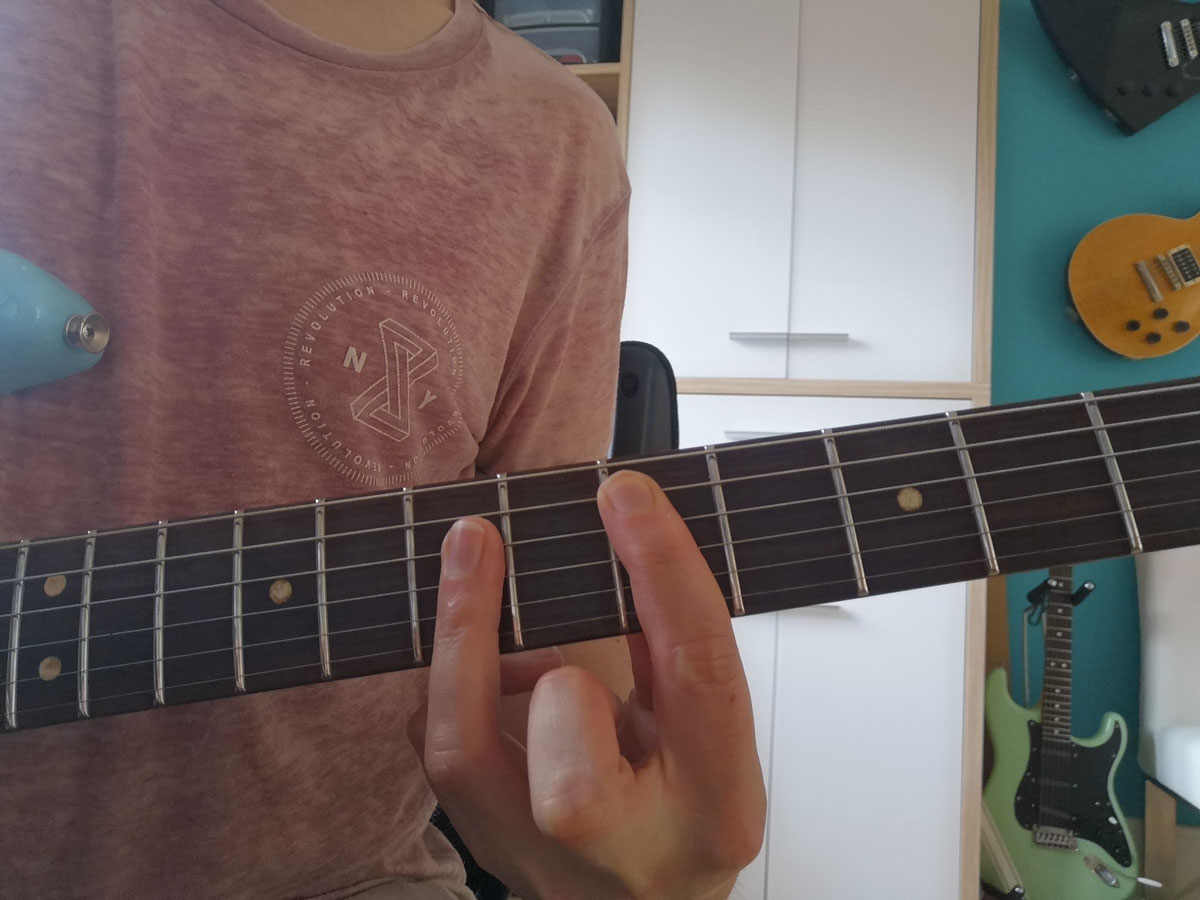
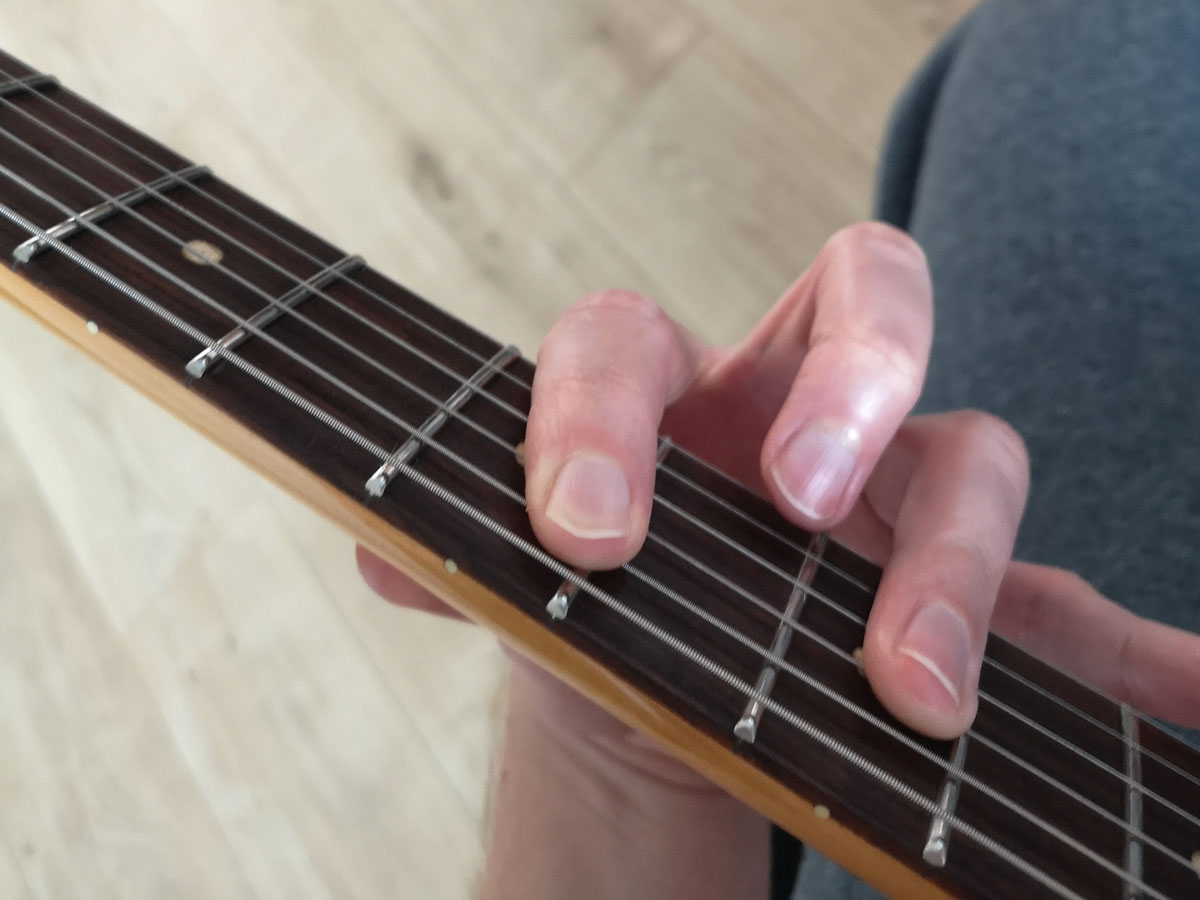
The A-shape barre chord for D major is at the 5th fret. Barre the strings from the A string up to the high E string with your first finger. You need to fret the 7th fret of the D, G, and B strings with your remaining fingers. You can either use one finger per string, or barre all three with one finger (usually your third finger). If you choose the barring option, you’ll probably mute the high E string, which will sound fine.
Pro tip: when holding A-shape barre chords, you usually avoiding strumming the low E string. You can go one better by letting the tip of your first finger graze the low E. This will choke the string so that you can’t hear it even if you catch it while strumming. It takes a bit of work to make this a habit, but once you can do it you’ll never have to worry about a stray E string making you sound bad again.
All the latest guitar news, interviews, lessons, reviews, deals and more, direct to your inbox!
How to play the D chord on guitar: easy D chord variations
Dsus2
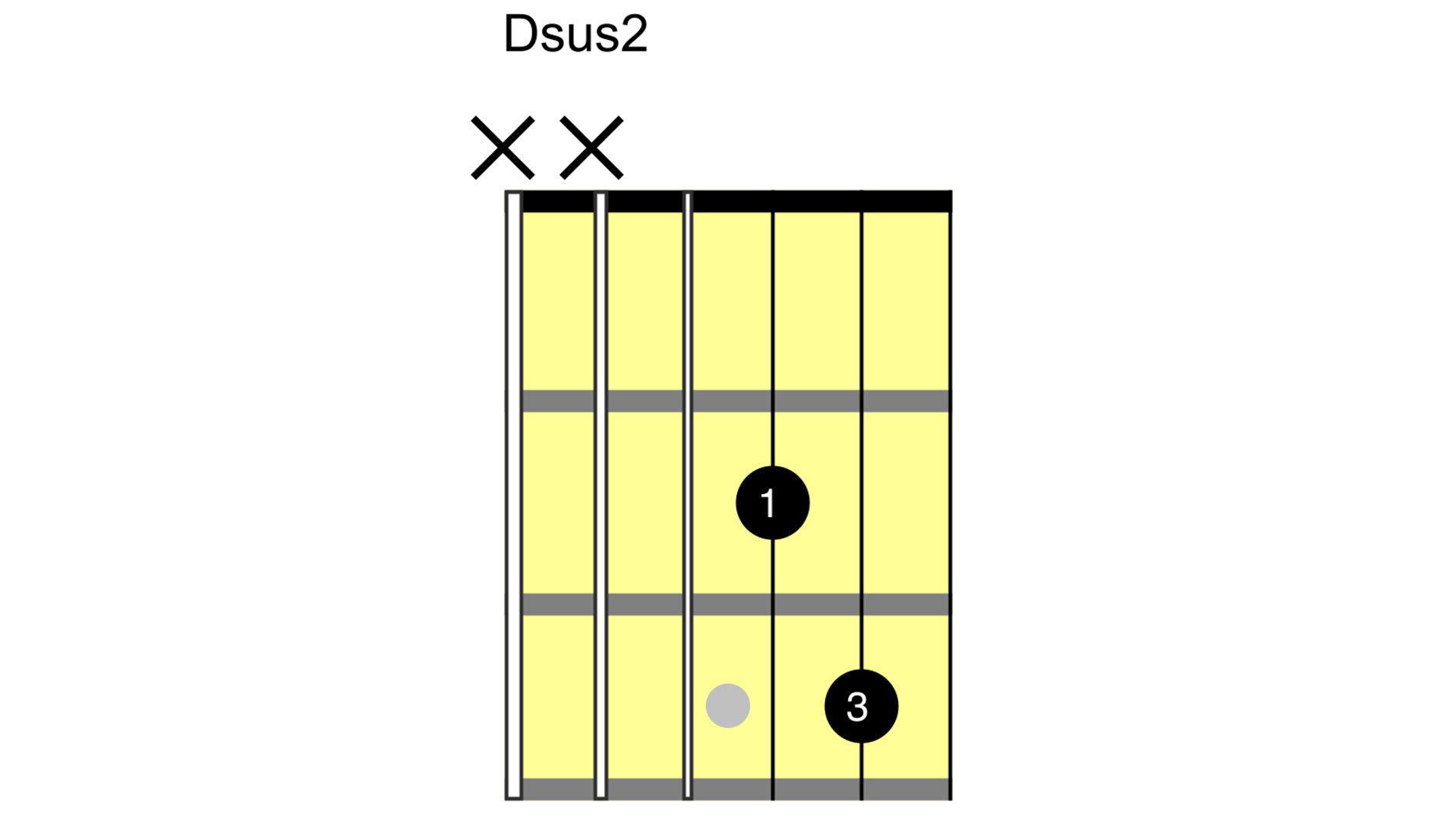
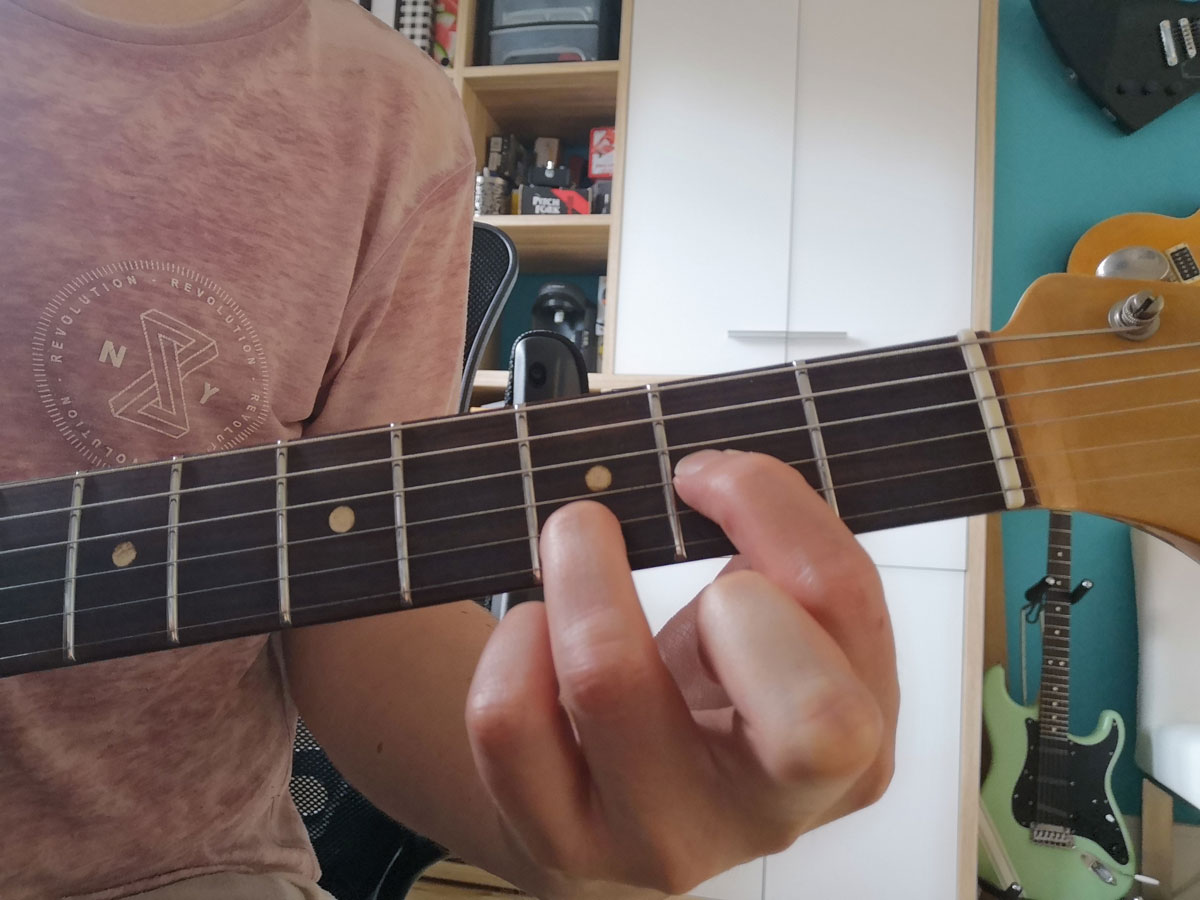
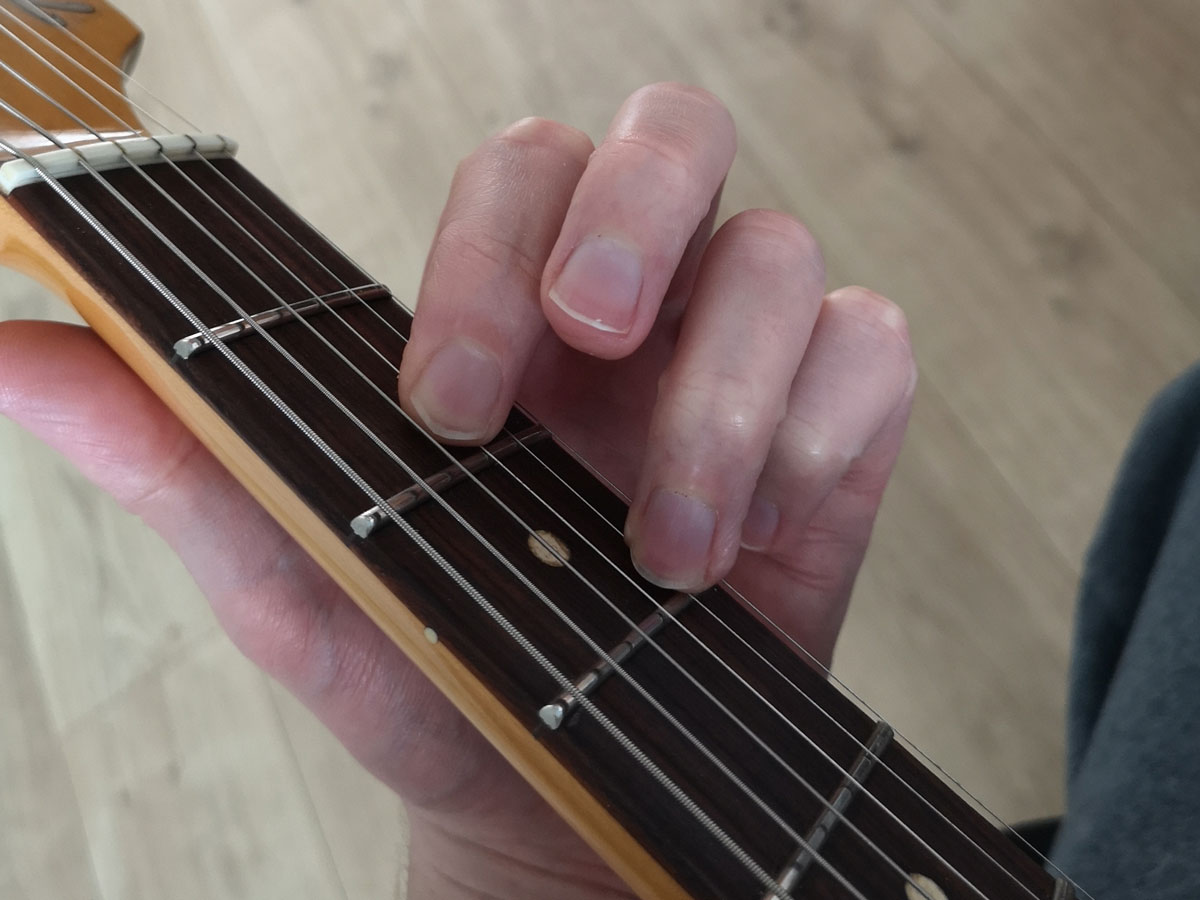
Make the standard open D major chord shape (see above), and remove your second finger from the high E string. This chord is Dsus2, and it sounds beautiful. Sus2 chords sound great in acoustic singer-songwriter contexts, and you’ll also hear them in distorted riffs by emo and djent bands.
They’re not major or minor, so you can use them almost anywhere! This chord will also improve your fretting accuracy, because you’ll have to be careful not to choke the high E string with your other fretting fingers.
Dmaj7
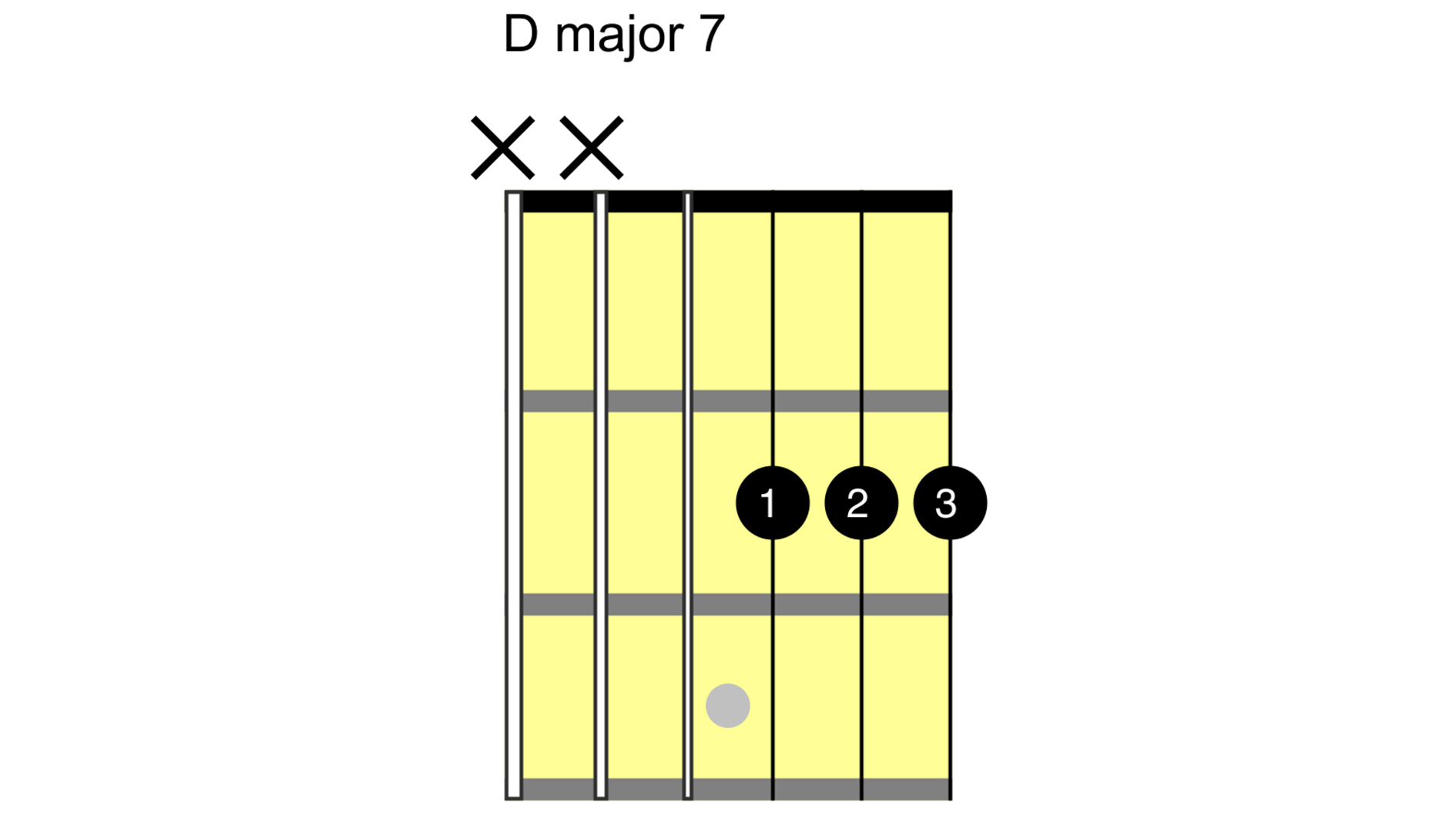
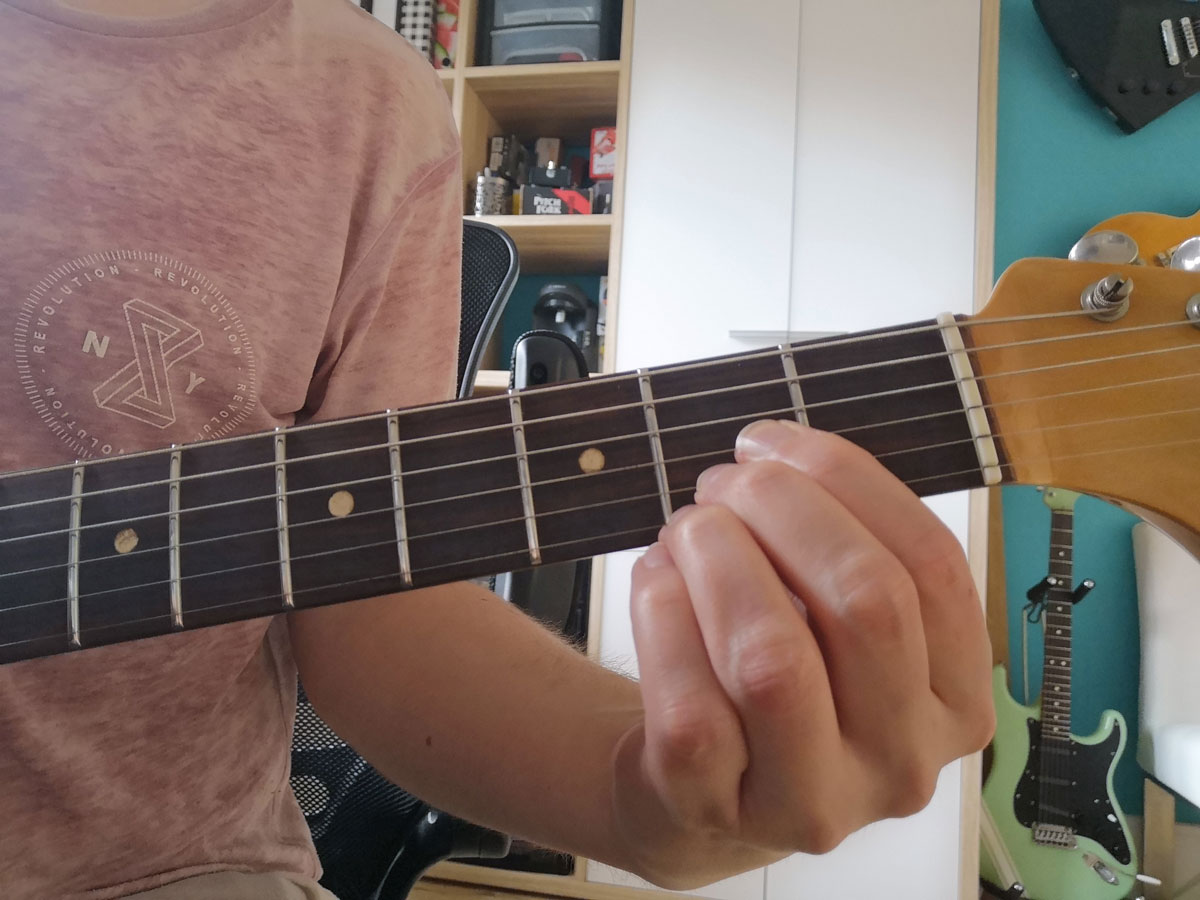
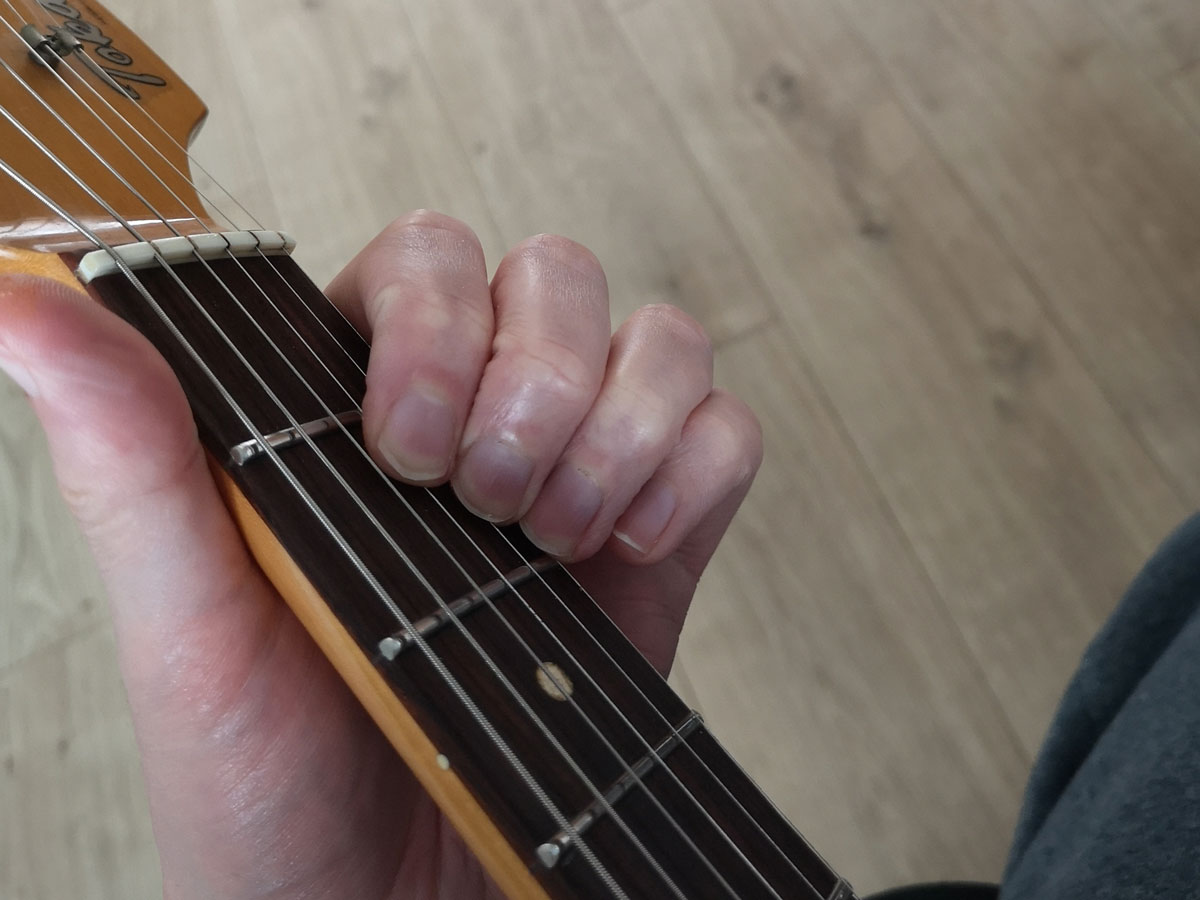
You can also try D major 7, which looks a lot like the classic open A major shape, but with each finger moved onto a higher string. Put your first finger on the G string, fret 2, second finger on the B string, fret 2, and third finger on the high E string, fret 2. You’ll often hear major 7s in jazz, but you can try it anywhere you want a more sophisticated major sound.
How to play the D chord on guitar: advanced D chord variations
D/F#

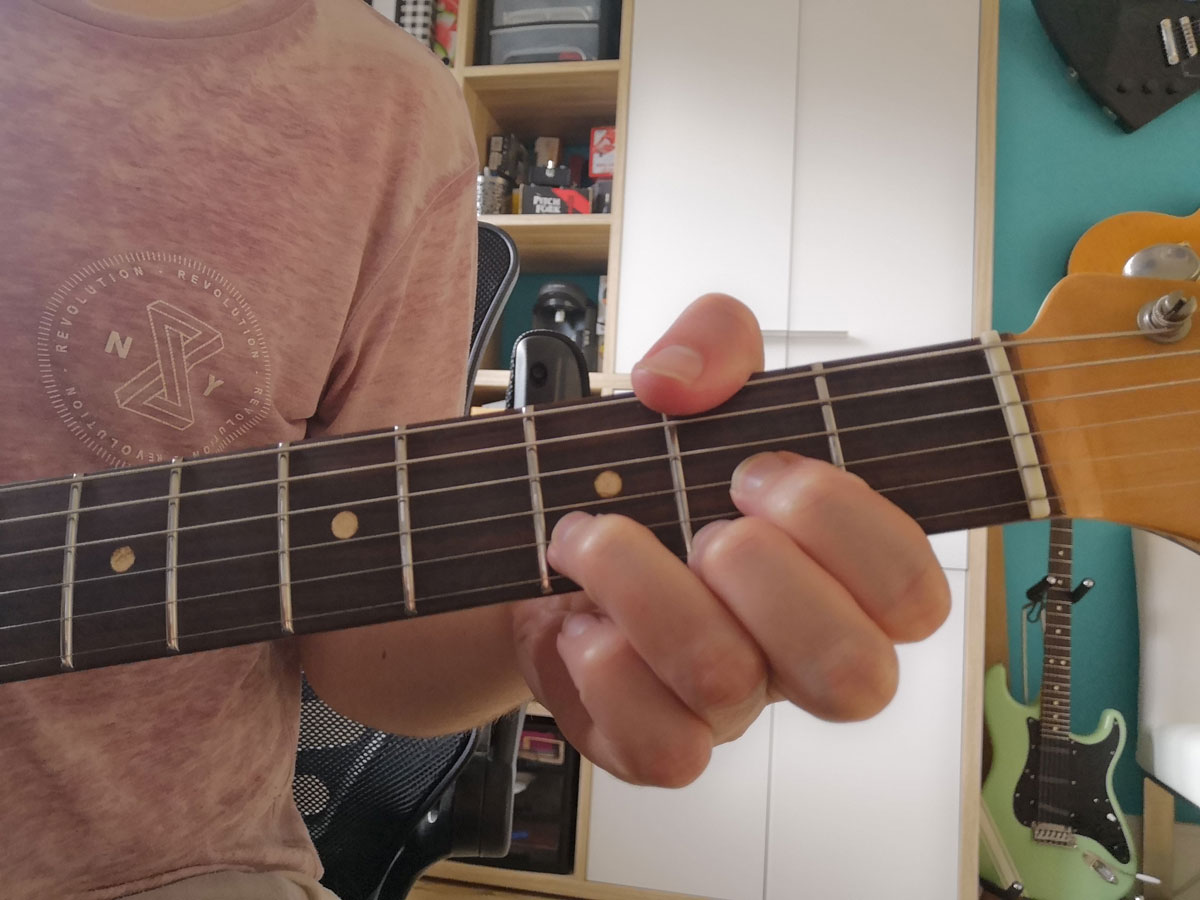
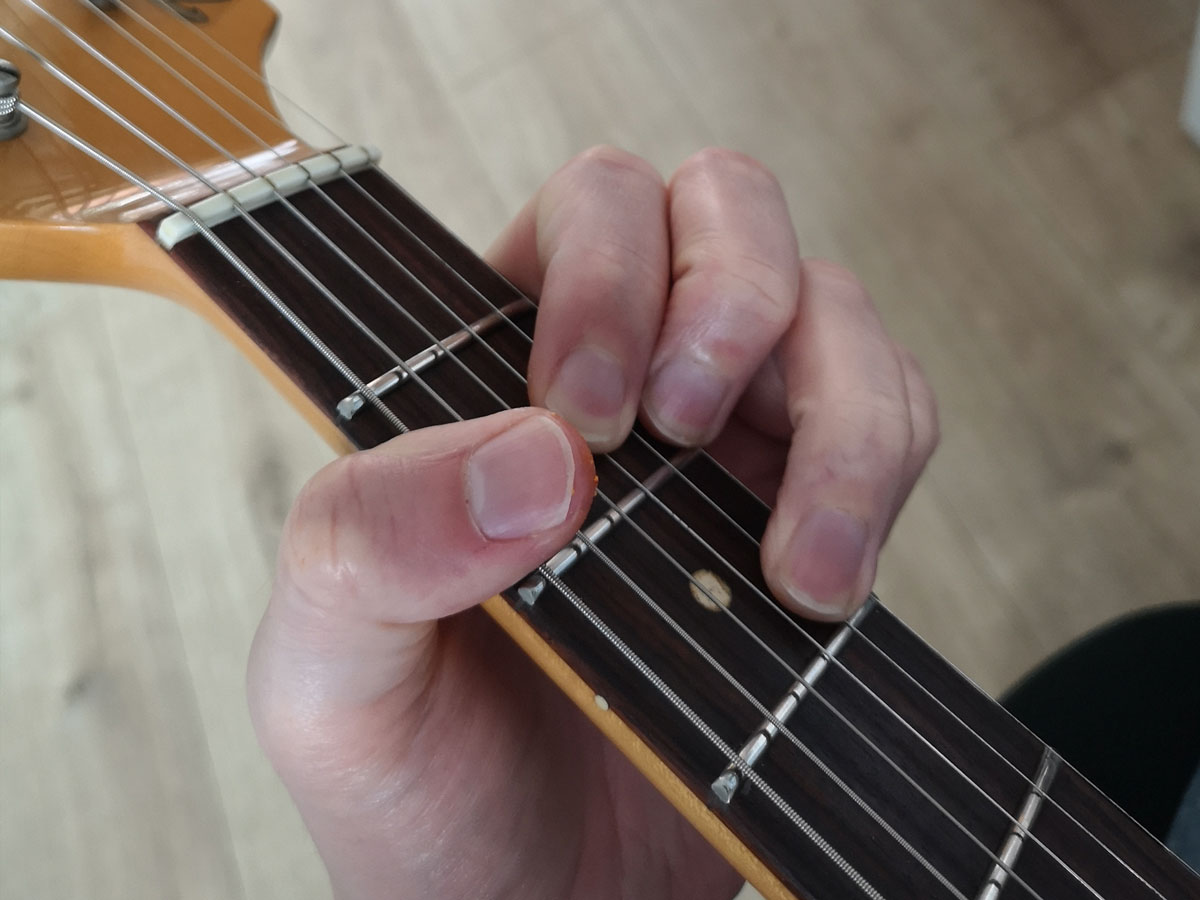
Jimi Hendrix liked to modify the classic open D major shape (see above) by wrapping his thumb over the neck, and fretting the second fret on the low E string. This technically makes a D/F# or first inversion chord. It sounds pretty cool, especially leading into Highway to Hell (you can hear the same sound in Highway to Hell, although Angus Young used a different fingering).
This will feel like a stretch at first but it’s a useful technique. If you can’t manage to fret that note cleanly with your thumb, you can just rest your thumb against the E string to choke it. Then you can strum freely, without having to avoid the low E.
D major G shape barre
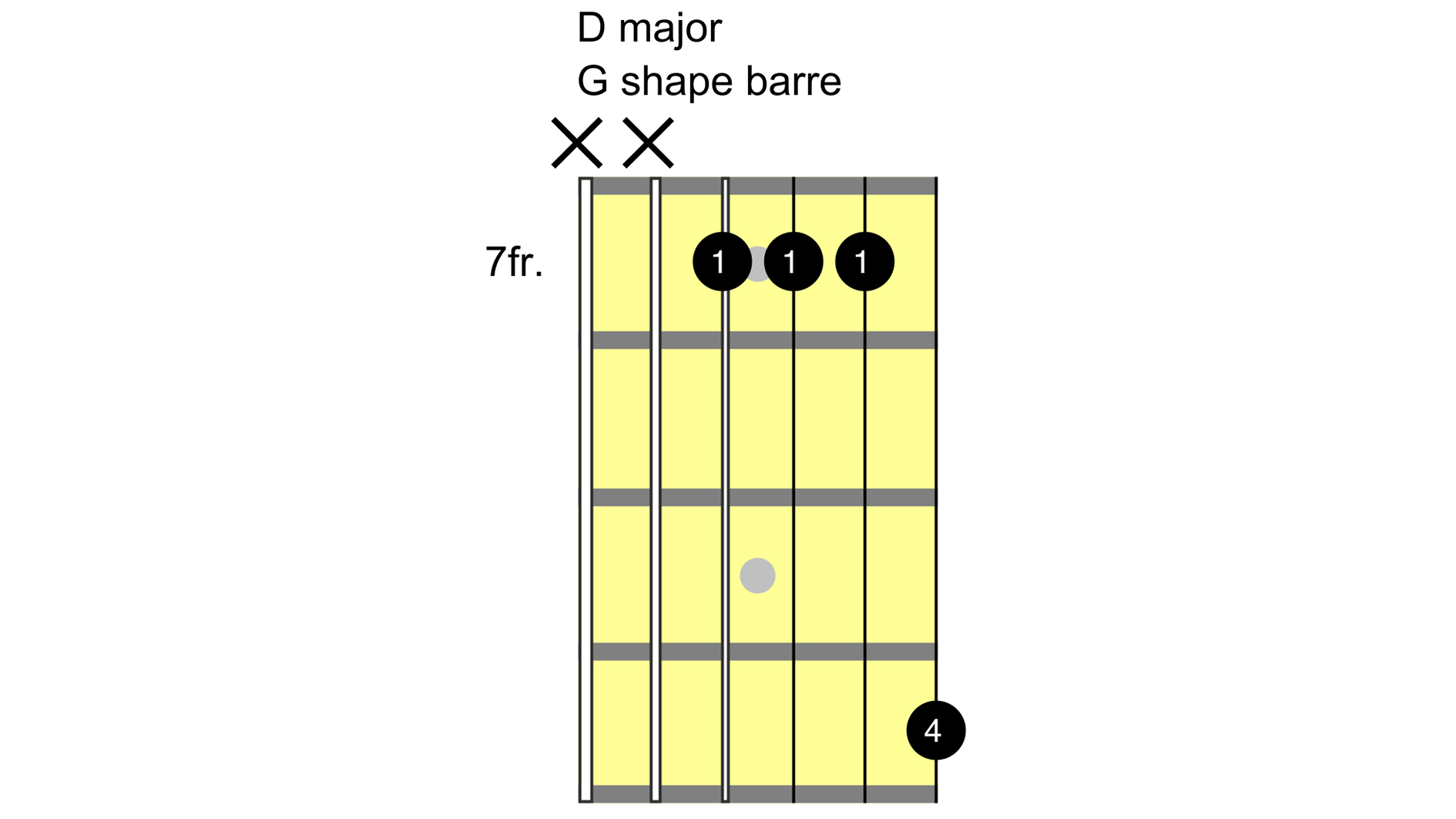
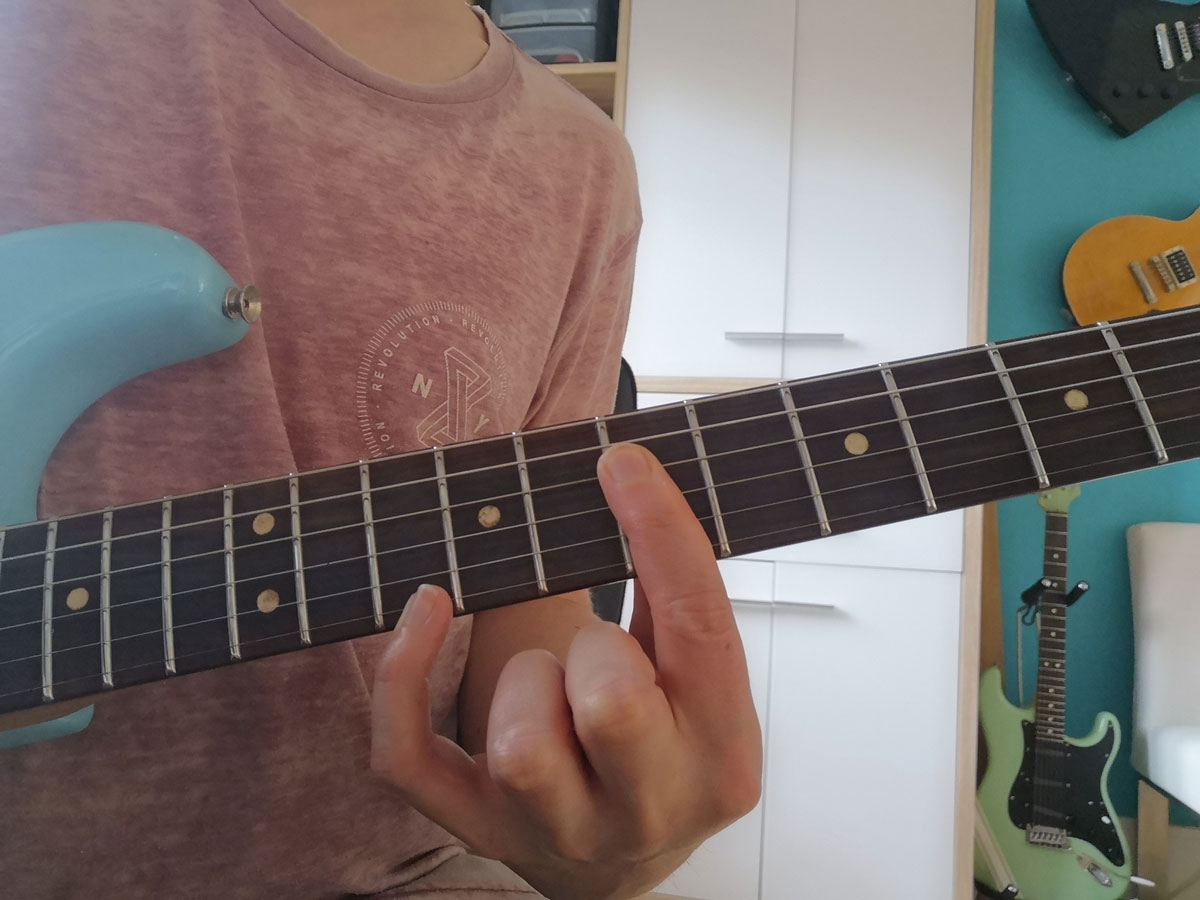
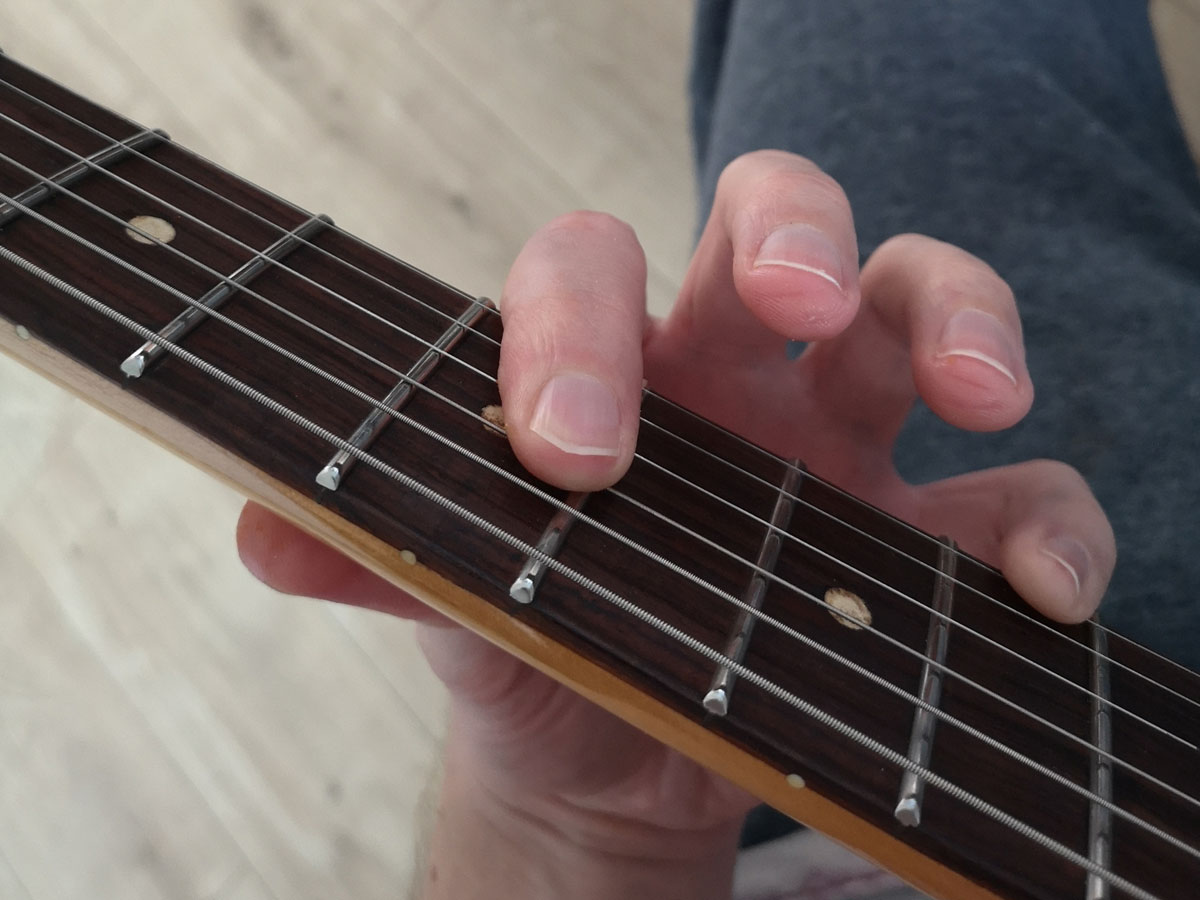
Finally, try another barre shape, this time based on a partial G shape. Barre the 7th fret with your first finger (you only need to barre the top four strings, D to high E), and add your fourth finger to the high E string, 10th fret. This has a bright, open sound that’s useful in funk and R&B riffs.
Gear up with our beginner guitar guides
- Take your first steps with the best acoustic guitars for beginners
- Or plug in with the best beginner electric guitars
- Start them young with the best guitars for kids
- Essential guitar accessories for beginners
- Give you playing a boost with the best online guitar lessons
Jenna writes for Total Guitar and Guitar World, and is the former classic rock columnist for Guitar Techniques. She studied with Guthrie Govan at BIMM, and has taught guitar for 15 years. She's toured in 10 countries and played on a Top 10 album (in Sweden).

